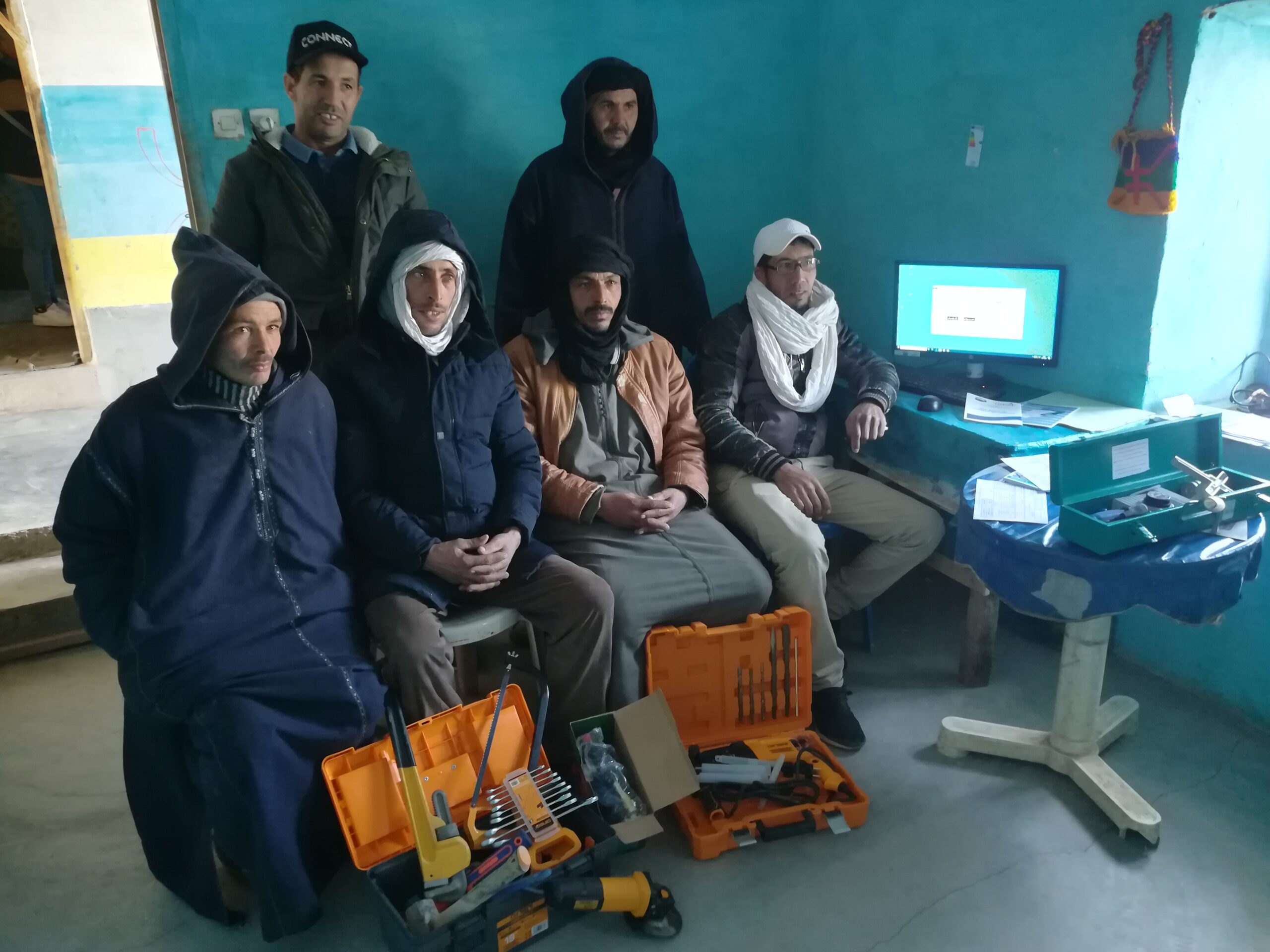Capacity building in Morocco by HAMAP-Humanitaire
Despite a satisfactory rate of access to water and sanitation services in Morocco, there is still a backlog in rural areas, which lack the financial, technical, and organizational means to develop these services in the villages of their territory. Although water access infrastructures often exist, the rural communes, which are the project owners, and the user associations to which they delegate management, do not have the know-how or the equipment necessary to ensure the sustainable management of these services.
In this context, HAMAP-Humanitaire, in partnership with local association “AKHIAM” for the socio-economic development in Imilchil valley, conceived a project of intervention and organization capacity reinforcement of 16 village water management committees working in 16 villages of the Imilchil Valley, in the Moroccan High Atlas.
Local context
The 16 villages are among the highest and the most isolated in the mountains of the Moroccan High Atlas between 2200- and 2400-meters altitude. The 16 villages are populated by around 15 000 inhabitants. The climate is glacial in winter (10 degrees), the socio economical indicators are among the worse in the Kingdom, causing massive emigration of young people, specially those who want to access to studies and to have better economical perspectives.
Regarding access to drinking water, each village has an alimentation system through a borehole with a depth between 25 and 120 meters, a tank with a gravity distribution network and house connections. However, since the commissioning of these small networks in the early 2000s, people have noticed a rapid deterioration of the facilities due to poor management and maintenance. The management of the networks is entrusted to village management committees in self-management, without training or adapted equipment and without financial or technical support from the state services to meet their needs. The maintenance of the networks is made with clogging using rudimentary and inappropriate means: most often simple inner tubes or recycled rubber. The issuance and collection of bills are random, poorly recorded and many disputes arise between residents and the committees, which are unable to make improvements to the increasingly numerous and important malfunctions on the networks.
The actions
- Realization of a diagnostic and awareness campaign
These meetings led to evaluate the level of administrative and account management of the 16 concerned villages, which are bad (no bank account, no invoice tracking file, lack of membership renewal…). These inter-association exchanges led to the sharing of experiences in order to improve the pooling of good practices. At same time, each village chose a resource person to be trained as a plumber.
- Development of a “customized” training programLegal and administrative training for associations: knowledge of the legal obligations of members, the need to produce minutes of meetings, financial reports, organization of General assemblies, opening of a bank account, the obligation to use appropriate materials during connections or interventions, the management of disputes and legal proceedings
Digital training for budget management and invoicing follow-up: each association has been provided with a computer equipped with a printer. These units are equipped with a simple and easy-to-use software for the entry, the follow-up of the invoicing, the archiving and the traceability of receipts and expenses. Training on the use of the software has been organized for each association and a user’s guide has also been provided. AKHIAM provides long-term support to associations that are experiencing difficulties in their practice.
Technical training for the control of the connections and the realization of the maintenance operations (including the repair of leaks)
Conclusions/ achieved results:
In the short term, the 16 associations have benefited from a solid training program to acquire the necessary rudiments of service organization and technical intervention on the networks. The basic tools and equipment, both digital and physical, are now available in the villages to save the SAEP from predictable collapse.
As a spillover effect, some of the priority works identified in the framework of this project were financed by the province itself: the extension of the network in two of the target villages and the renovation of an inadequate borehole in a third.
As far as the HAMAP-AKHIAM partnership is concerned, a duplication of this project to new villages in the Valley is in the co-construction phase based on the conclusions summarized here. résumées.
The project has been realized with the support of :







